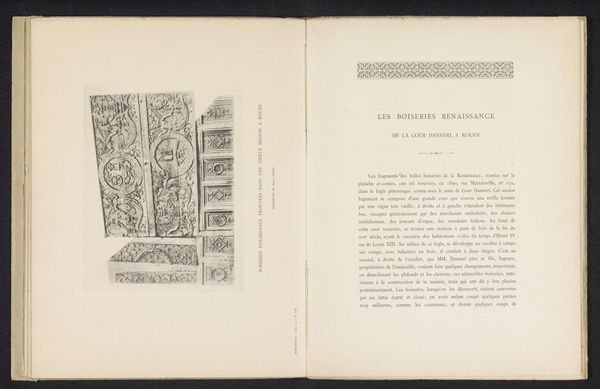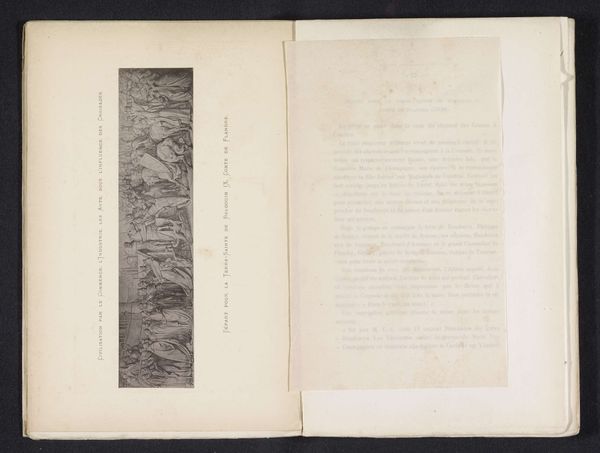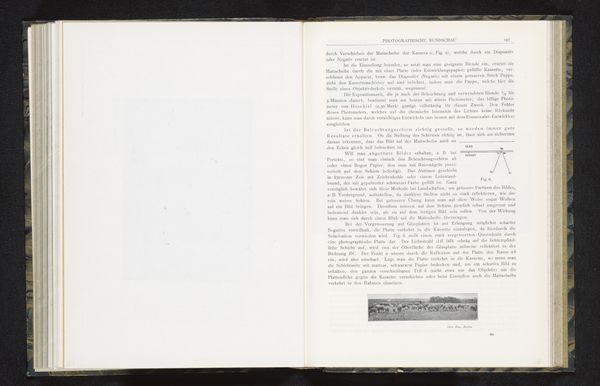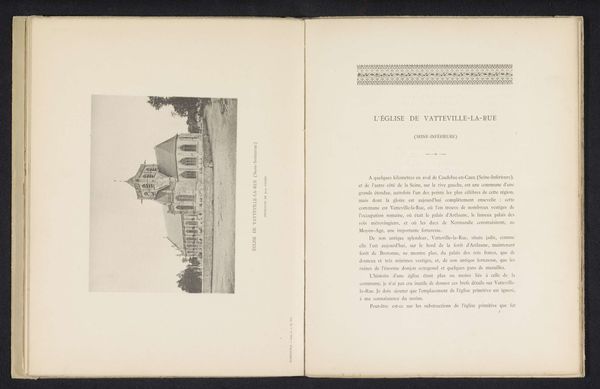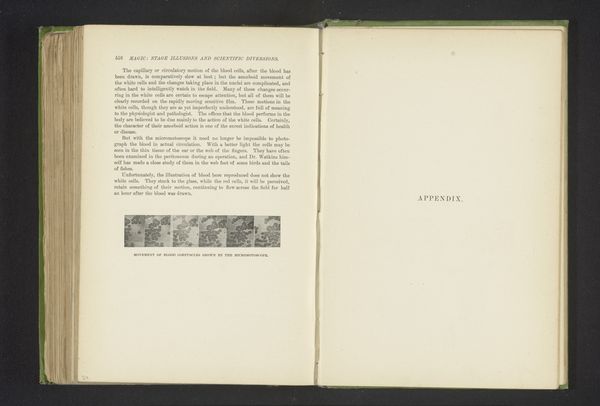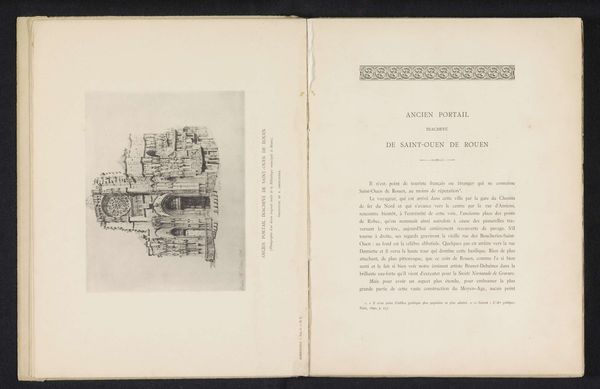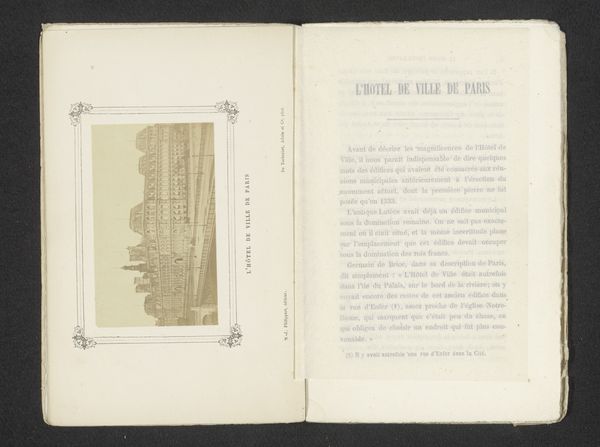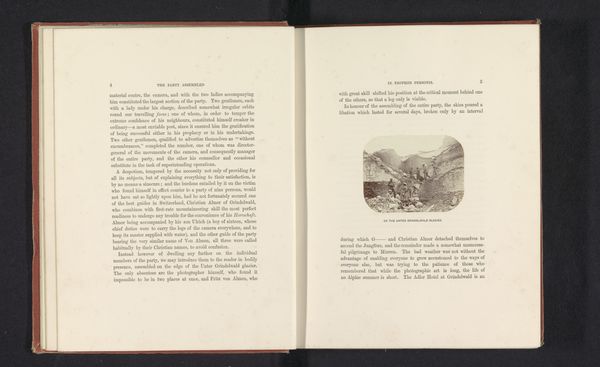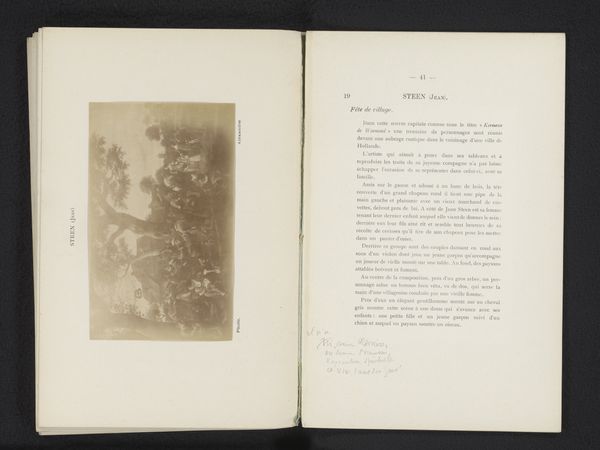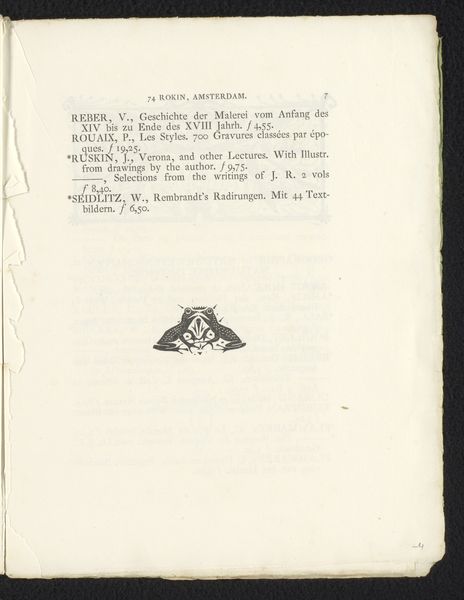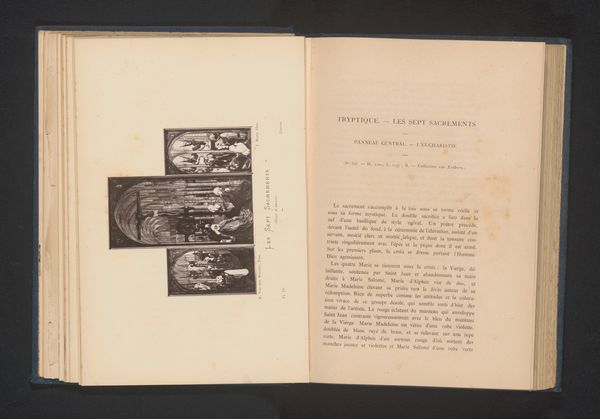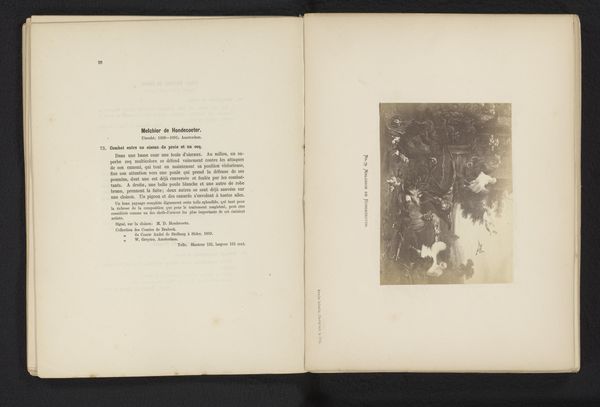
Vier basreliëfs van de Église Saint-Lô te Bourg-Achard, voorstellende scènes uit het leven van de heilige Eustachius van Rome before 1895
0:00
0:00
relief, wood
#
script typeface
#
aged paper
#
medieval
#
script typography
#
narrative-art
#
relief
#
hand drawn type
#
personal journal design
#
romanesque
#
personal sketchbook
#
hand-drawn typeface
#
thick font
#
pen work
#
wood
#
handwritten font
Dimensions: height 43 mm, width 140 mm
Copyright: Rijks Museum: Open Domain
Editor: So, here we have an image of a book page, presenting four bas-reliefs rendered in wood, created before 1895 by Raoul Bonet. The carvings depict scenes from the life of Saint Eustachius of Rome and seem very medieval. What strikes you most about this work? Curator: It's interesting to consider these reliefs not just as devotional objects, but as products of skilled labor within a specific social context. What kind of tools were used? Who was involved in the production and distribution of these images? Were they commissioned, or produced for a broader market? The materiality of the wood itself – its origin, how it was treated – also becomes significant. Editor: That's fascinating, I hadn't considered the labor aspect so directly. The description notes they're found in a chapel; how does their location impact our understanding of them materially? Curator: It roots them in a specific religious economy. Wood, though common, was worked, shaped, and elevated through craftsmanship. Consider how the location elevates not only the spiritual, but the material; where was the wood sourced, and how did its transportation affect the overall cost of producing these objects of faith? Furthermore, does their narrative nature influence the consumption and the interaction with the art itself? Editor: So, you're saying we should examine not just the religious narrative, but the economic and social narratives embedded within the materials and the production process? Curator: Precisely. It helps us move beyond simple iconographic interpretation and towards a richer understanding of art as a product of complex social and economic forces. How do the aged materials shift our understanding? What’s real, and what’s aged fantasy? Editor: That makes me look at it in a totally new way, seeing beyond the religious narrative into production, value and materiality. Thanks! Curator: Likewise! It highlights how even seemingly straightforward art objects can reveal hidden stories about labor, materiality, and consumption.
Comments
No comments
Be the first to comment and join the conversation on the ultimate creative platform.
